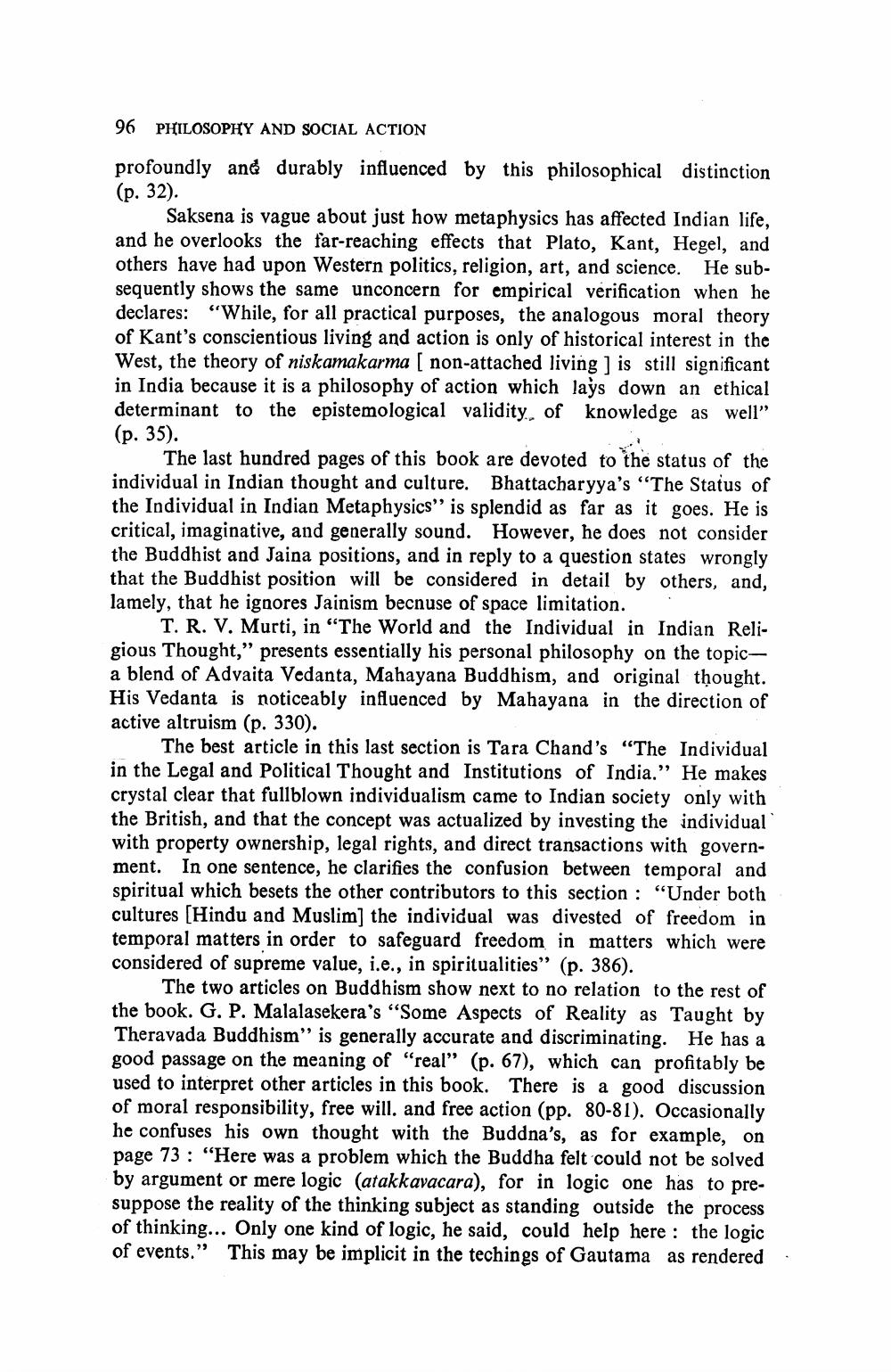Book Title: Indian Mind Essentials Of Indian Philosophy And Culture Author(s): Richard H Robinson Publisher: Richard H Robinson View full book textPage 9
________________ 96 PHILOSOPHY AND SOCIAL ACTION profoundly and durably influenced by this philosophical distinction (p. 32). Saksena is vague about just how metaphysics has affected Indian life, and he overlooks the far-reaching effects that Plato, Kant, Hegel, and others have had upon Western politics, religion, art, and science. He subsequently shows the same unconcern for empirical verification when he declares: "While, for all practical purposes, the analogous moral theory of Kant's conscientious living and action is only of historical interest in the West, the theory of niskamakarma [ non-attached living ] is still significant in India because it is a philosophy of action which lays down an ethical determinant to the epistemological validity of knowledge as well" (p. 35). The last hundred pages of this book are devoted to the status of the individual in Indian thought and culture. Bhattacharyya's "The Status of the Individual in Indian Metaphysics" is splendid as far as it goes. He is critical, imaginative, and generally sound. However, he does not consider the Buddhist and Jaina positions, and in reply to a question states wrongly that the Buddhist position will be considered in detail by others, and, lamely, that he ignores Jainism becnuse of space limitation. T. R. V. Murti, in "The World and the Individual in Indian Religious Thought," presents essentially his personal philosophy on the topica blend of Advaita Vedanta, Mahayana Buddhism, and original thought. His Vedanta is noticeably influenced by Mahayana in the direction of active altruism (p. 330). The best article in this last section is Tara Chand's "The Individual in the Legal and Political Thought and Institutions of India." He makes crystal clear that fullblown individualism came to Indian society only with the British, and that the concept was actualized by investing the individual with property ownership, legal rights, and direct transactions with government. In one sentence, he clarifies the confusion between temporal and spiritual which besets the other contributors to this section: "Under both cultures [Hindu and Muslim] the individual was divested of freedom in temporal matters in order to safeguard freedom in matters which were considered of supreme value, i.e., in spiritualities" (p. 386). The two articles on Buddhism show next to no relation to the rest of the book. G. P. Malalasekera's "Some Aspects of Reality as Taught by Theravada Buddhism" is generally accurate and discriminating. He has a good passage on the meaning of "real" (p. 67), which can profitably be used to interpret other articles in this book. There is a good discussion of moral responsibility, free will. and free action (pp. 80-81). Occasionally he confuses his own thought with the Buddna's, as for example, on page 73: "Here was a problem which the Buddha felt could not be solved by argument or mere logic (atakkavacara), for in logic one has to presuppose the reality of the thinking subject as standing outside the process of thinking... Only one kind of logic, he said, could help here: the logic of events." This may be implicit in the techings of Gautama as renderedPage Navigation
1 ... 7 8 9 10 11
